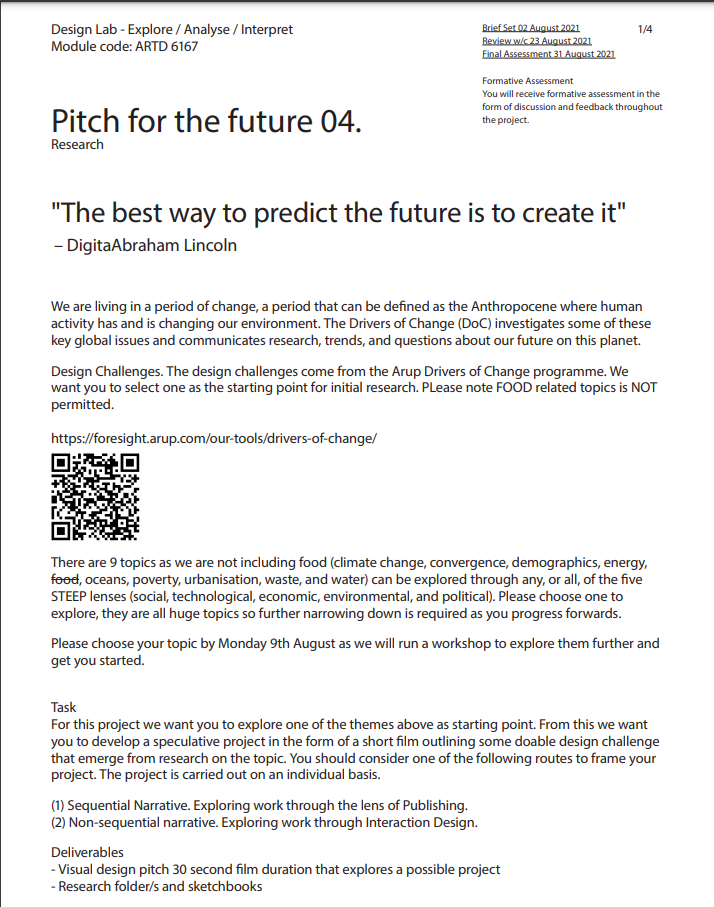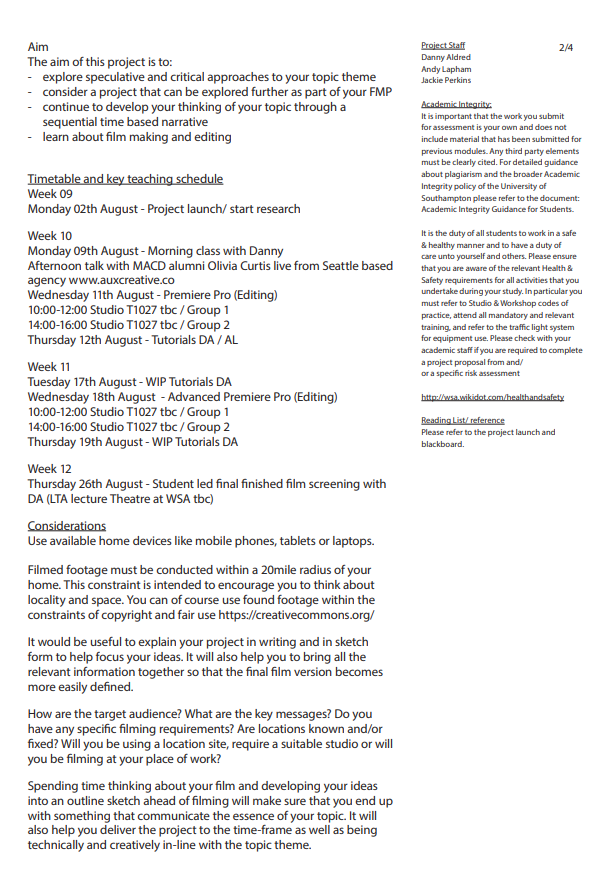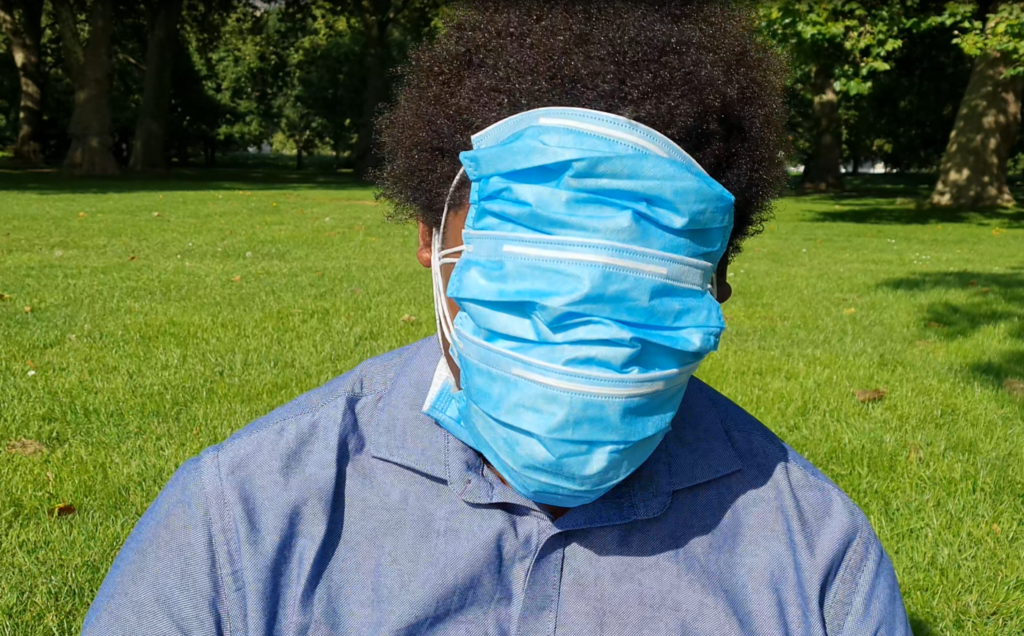BRIEF.
Our final project for this semester is about researching a global crisis and create a film as a reflection.
We need to choose one topic from this website:
https://foresight.arup.com/our-tools/drivers-of-change/
All topics listed on the website are about the global crises, such as water, urbanisation, climate change, etc…
The topic I am choosing is Convergence. This crisis focuses on the convergence of the technologies, for example, the internet & big data. The reason why I chose this topic is that I want to use this opportunity to extend my research based on the topic I did in the last semester, which was about the big data crisis.
CONVERGENCE.
To understand what is convergence and how it causes a global crisis, I need to check on its definition.
The image below how Josef Hargrave described this topic on his website:

Hargrave mentioned a couple of good points in his description: technologies aren’t always beneficial, one advantage might generate multiple disadvantages.
WHAT IS CONVERGENCE?
Here is a paragraph describing what is convergence:

Based on the description above, we understand convergence basically means multiple technologies mixing with each other to generate a new outcome. This can be beneficial or detrimental.
THREE TYPES OF CONVERGENCE.
According to AT&T, there are three major convergences:
1.
The most well-known and understandable type of convergence is the smartphone itself. This is an excellent example of technology convergence. ICT, computer networks, and media come together in one platform that allows multi-functionality. Many devices were able to be left at home unused once more stable versions of the smartphone were released. The term “smartphone” was coined by the Ericsson Company in 1997 for one of their phones, the GS88. Ericsson’s R380 phone was marketed as the world’s first smartphone with an operating system (OS) called Symbian. Many experts contend that the first “real” smartphone was the first iPhone, and point to examples of how its design was incorporated by other companies after its release. However, the iPhone was released a good 10 years after the R380 and in that time there were plenty of models in that time period that offered much of the same functionality albeit in a less stylish form factor. Today, there are billions of smartphone users, and the device continues to replace more and more technologies, products, and services with the release of each iteration and application. For the future, only the limits of the hardware, and of course our human imagination, will impede the functions a smartphone can handle.
Thoughts: the convergence can be hardware. The smartphone is an excellent example since it is powerful enough to play games, and a high-resolution screen allows users to watch films with it.
2.
Another type of convergence is what some experts are calling the “Internet of Transport.” This is the transportation industry shifting to using digital technologies and being constantly connected to the network. This includes everything from automobiles designed to accommodate your smartphones and Internet activities to public transportation options that allow mobile payment options, real-time updates, and support Wi-Fi so there are no more coverage dead spots.
Thoughts: the convergence can be purely virtual. Internet and Wi-Fi are the perfect examples here. Internet contains so much information, and Wi-Fi provides high speed to give the internet better accessibility.
3.
Media convergence is the joining together of different mass communication formats and the Internet. This is especially apparent in the creative media sector. For example, think about releasing a story to the public in print book form. Media convergence is putting that book put onto your Kindle as another vehicle for content delivery, made into a movie, put on Audible, and even made into a video game for people to play with the story’s characters. This is not merely an adaptation from one form of media to another, such as toys being produced from films, but a deepening of your original content to make it more complex and accessible. Billboards and print media have pointed their viewers to the Internet to see the details behind their content, but now we have even more content accessible via the Internet. Another example is in magazines. Glossy photos are chosen and laid out in the print medium that you can purchase (or leaf through) in the grocery store. However, many of the layouts also offer more pictures available from the photoshoot or to extend the story online.
Thoughts: Finally, this type of convergence is the mixture of both hardware and virtual/software. For example, people use the internet on their smartphones and computer. This type of convergence creates huge accessibility to its users, but also causing troubles such as misinformation, scamming or privacy leakage.
HOW DOES CONVERGENCE CHANGE OUR LIFE?
I also looked into how convergence affects our life:
According to Garry Kranz:
From a consumer perspective, technological convergence is often synonymous with innovation. Technologies rarely converge in their current form. Improvements are often introduced as a part of the convergence. Consider the popularity of video cameras a generation ago. Today, consumer-grade video cameras are almost nonexistent. Most people record videos on their mobile devices. Although they can eliminate the need to carry a separate device — a video camera, in this case — they also deliver superior video quality as compared to what was once available. Video cameras from the early 2000s, usually, had a maximum resolution of 480i (720 x 480) and, often, experienced poor battery life. In contrast, a modern mobile device can record in 4K resolution. Additionally, their batteries can sometimes last for days, depending on how the device is being used.
CHEAPER AND EASIER ACCESS:
Wi-Fi is a perfect example of this. Wi-Fi was available in the late 1990s, but at the time a Wi-Fi router cost thousands of dollars and, typically, could only be set up by an IT pro. Today, Wi-Fi is ubiquitous. Nearly every consumer electronic device is Wi-Fi enabled. Additionally, prices are far lower than they once were, and Wi-Fi routers have been greatly simplified to the point that a non-tech-savvy person can set them up. Such benefits stem directly from technological convergence
FOR BUSINESS:
Technological convergence means companies are more easily able to connect to their customers and to learn more about customer’s buying habits. In some cases, technological convergence even makes it possible for a business to influence a customer’s purchases. Some retailers track customer’s smartphone locations. If a customer is standing in a particular area of the store for a certain amount of time, the retailer might send the customer a coupon via text message or pop-up notification for the item they’re looking at, thus, further enticing the customer to make a purchase.
Thoughts: Convergence means people can do more creative things, and share them with other people. This helps to boost the innovation of our generation. Furthermore, the easier accessibility makes the information less valuable and most the people are able to access them in different ways. However, this might cause multiple issues, such as the spread of fake news, online scams or cybercrime.
ADVANTAGES & DISADVANTAGES.
Here are some advantages and disadvantages I gathered around convergence:
ADVANTAGES.
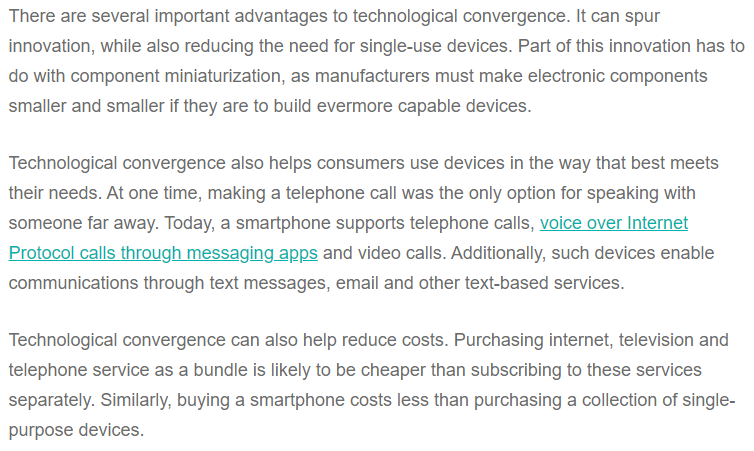
DISADVANTAGES.
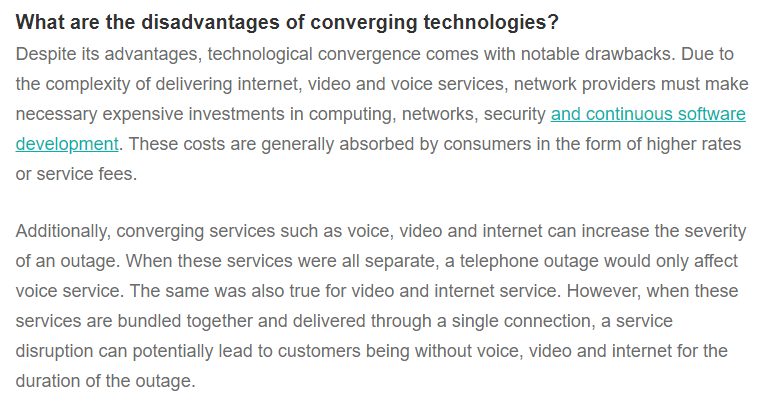

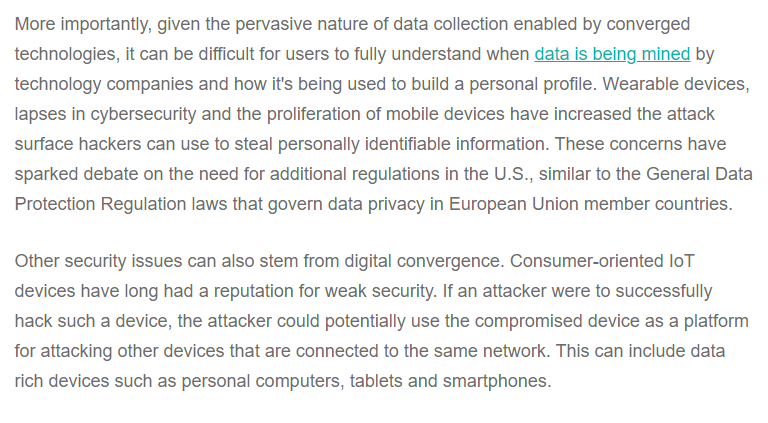
In conclusion, convergence definitely brings us benefits, but it seems like it has more disadvantages than advantages. Overall, there are two directions I can look into: the internet & emotions; media & misinformation.
CONVERGENCE 01: INTERNET & EMOTIONS
After redefining ‘Convergence’, I then decided to narrow it down into one aspect: the convergence between human emotions and the digital world. We all understand that the internet affects every aspect of our life, and we cannot live without it. Most of the time, we use it as a tool for our benefit, such as research, gaming or watching videos. However, the internet can be something more than a tool because it affects our emotions.
For example, the internet is a great place to hide your identity, and people do not need to be responsible for their words. This causes problems when toxic people are dominating the internet. Their actions and words will definitely affect other users’ experiences and emotions.
In addition, the internet can also bring positive emotions to people, such as posting animal’s pictures or sharing happy things in the community.
Here is a paper is written by:
Dr. Javier Serrano-Puche is a Senior Lecturer in the School of Communication and researcher of the Institute for
Culture and Society of the University of Navarra (Spain) (jserrano@unav.es) (http://orcid.org/0000-0001-6633-5303)
Click to download the PDF: DOWNLOAD
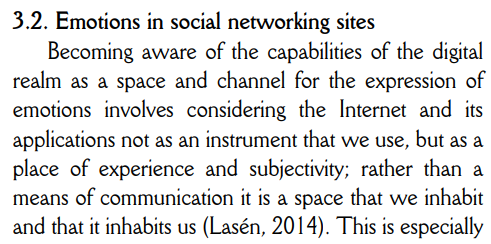
It’s inspiring that the author mentioned that we shouldn’t treat the internet as a tool, but a space where people sharing their experiences.

Here is an interesting experiment showing how positive or negative contents affect people’s emotions:
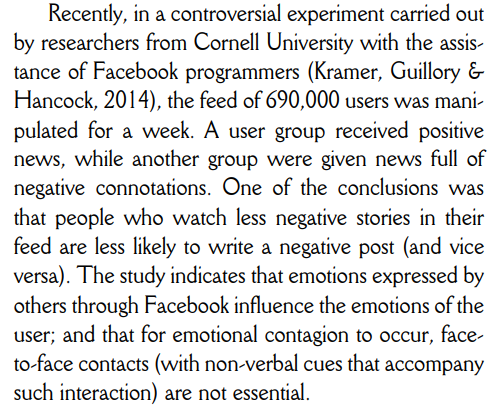
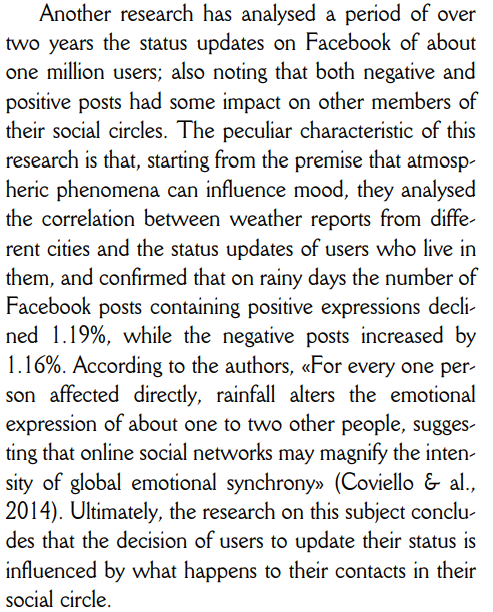
Both experiences above had me thinking about how the internet can be manipulated and control people’s emotions. Here is an interesting video that I think has some relations to the ideas above:
Emojis are great to express emotions and feelings. I think when people receive content and react to them, that moment can be represented as emojis.
Danny Aldred has published a book about the internet & emotions:
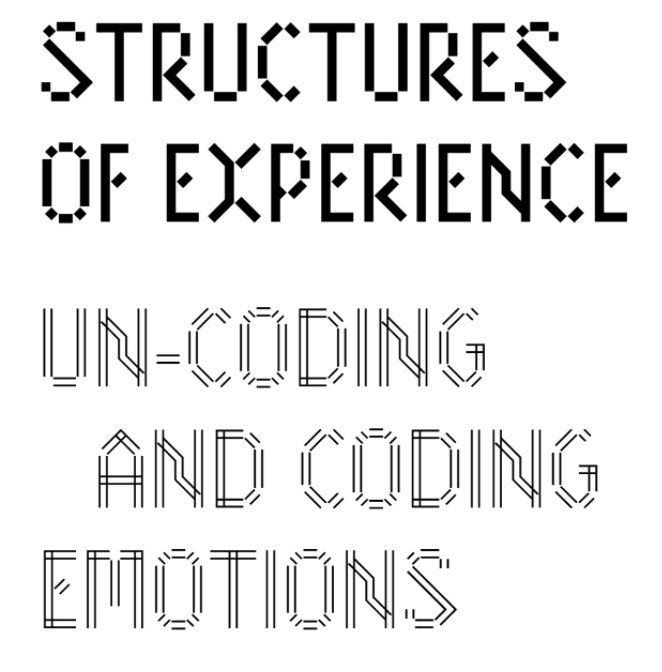
Here is an inspiring phrase I found from his book:

CONVERGENCE 02: INTERNET & MISINFORMATION
The second direction I am looking into is the internet & misinformation. We are all aware of this topic since the covid-19 outbreak happened. During this period of time, we received fake news or rumours every day, and they are affecting us in many aspects. Therefore, this is a good opportunity to look at how misinformation spreads on the internet.
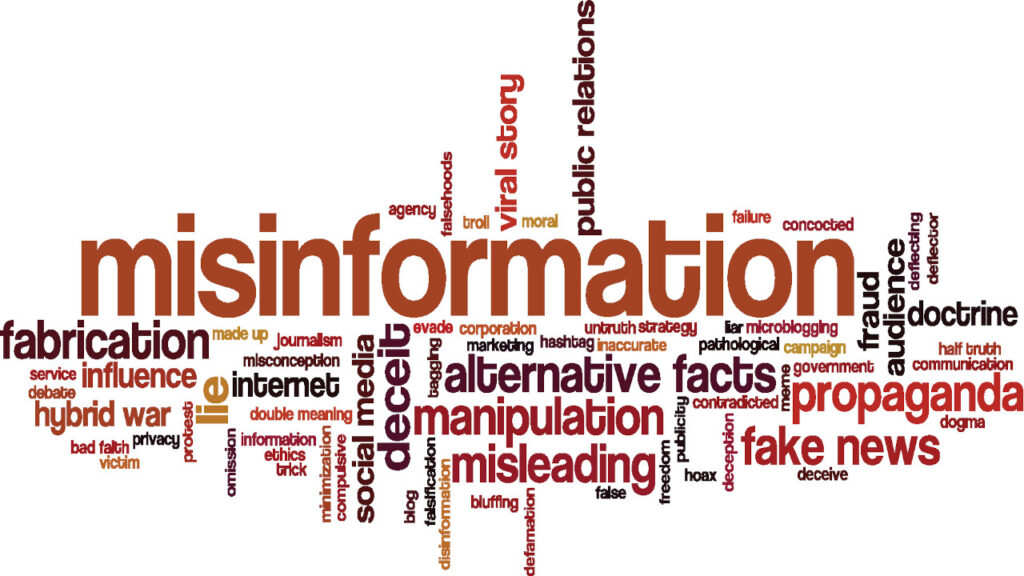
To understand how misinformation started, this is a video explains everything I need to know:
From what I understand, misinformation sometimes starts with unclear information and spreads easily when it sounds reasonable.
Here is another video of how it spreads through different kinds of people:
Interestingly, the spread of misinformation doesn’t only happen through humans, but also the internet. This comes into the convergence of the internet & big data. Paragraph below shows how twitter uses big data to spread misinformation:
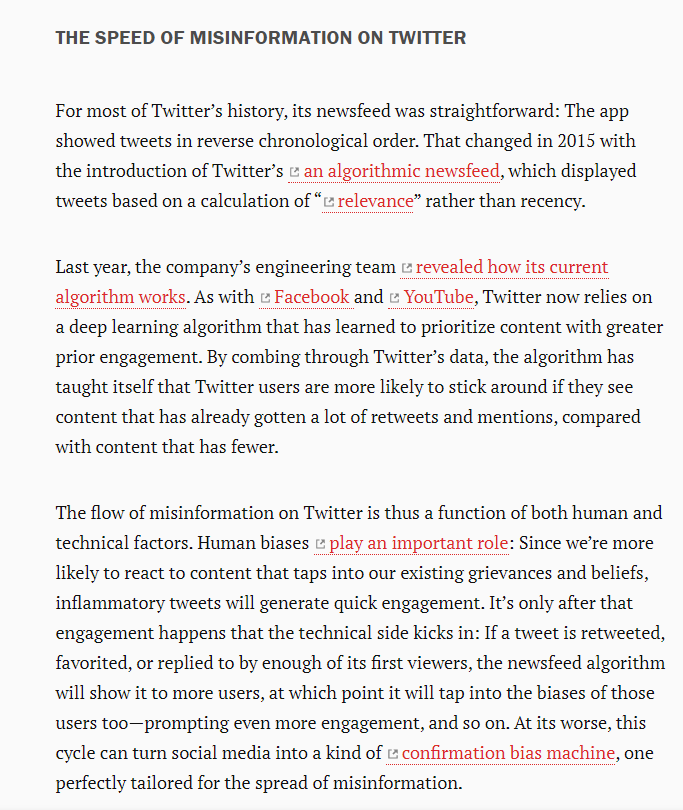
One thing I noticed from this research is that the media and politicians are more likely to spread misinformation than other institutions. This gives me an idea to make a video about how people use media and misinformation to control audiences’ emotions.
DESIGN CHALLENGE.
Here is my design challenge sheet:
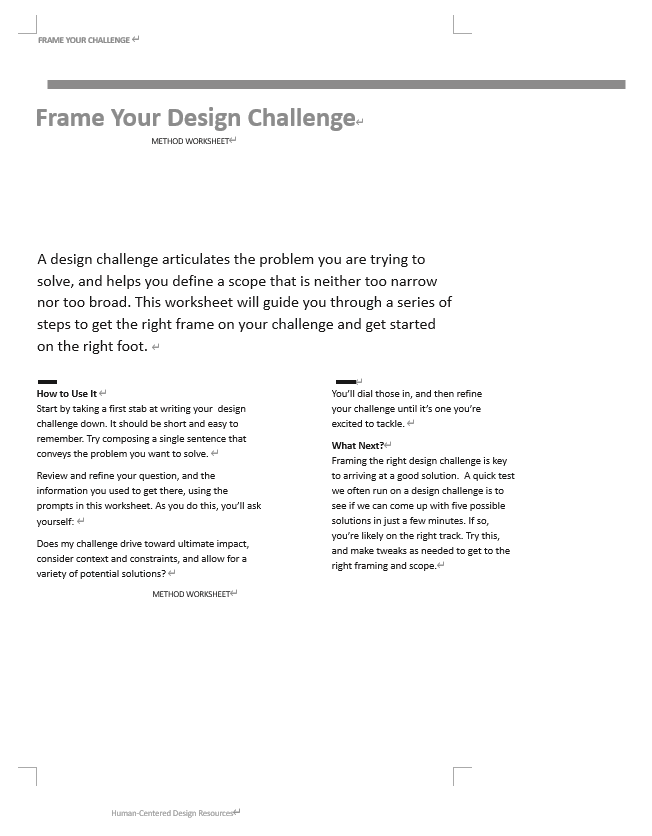
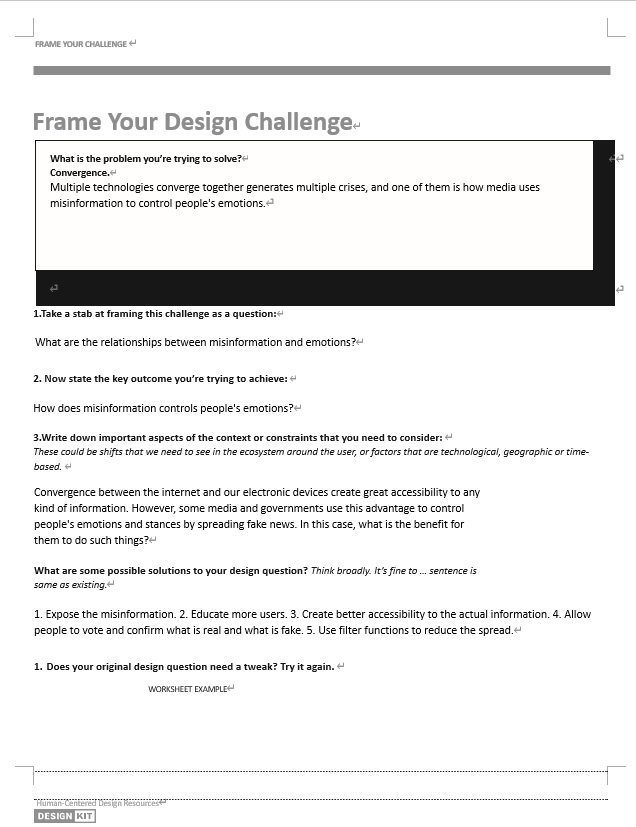
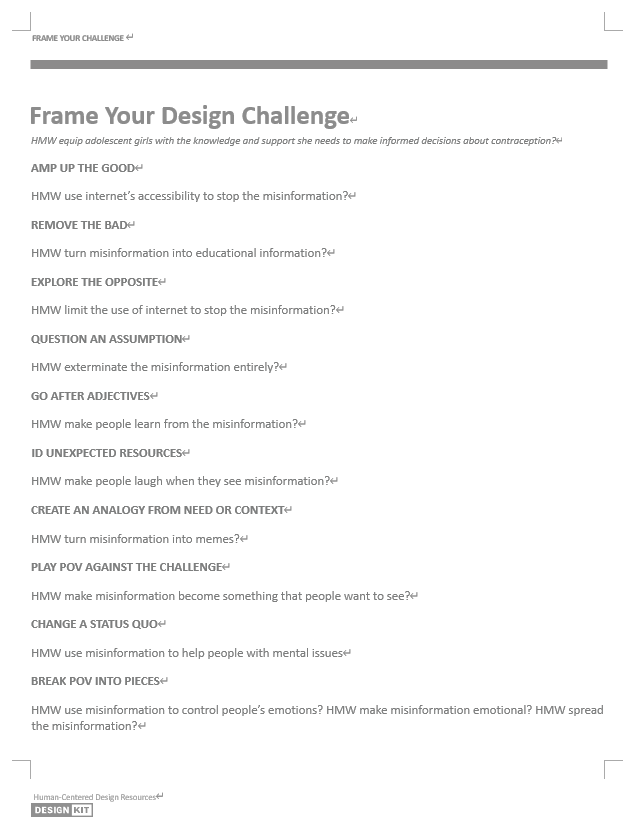
ADVERTISEMENT
When it comes to ‘media’, ‘misinformation’ and ’emotions’, advertisement is definitely something to look into, because we all know that ads are created to make money, and 80% of what it shows aren’t real.
Here is an example:
Here is another example:
In my opinion, the way companies promote their products can be seen as misinformation. They cleverly spread the misinformation to make consumers believe that their products are the best in the market, and sometimes deliver certain emotions to the audience when they watch the ads, so they will remember the brand and buy the products.
In addition to products, politicians are also good at advertising themselves. They create promotional ads and spread them through media:
Here is a video that explains the concept behind presidential adverts:
Here are more presidential adverts:
CONCLUSION.
From what I acknowledge from the research above, misinformation can be used as a method to control people’s emotions. For example, American presidential advertisements always make America looks like a paradise. The reason for doing this is to make people feel happy and hopeful when watching the ads and let them believe that this is what they will have if they elect the candidate. However, we all know that the realities are different to what they show in the ads. Some obvious examples can be seen in the presidential ads in the 1980s. They tried to express extremely positive emotions through the advertisement, even when there was a financial crisis happening during that time. The government tries to use positive advertisements to tell people that everything is alright.
I think this behaviour can be applied to the coronavirus outbreak: When the world is in danger and there are still politicians like Trump telling people that Covid-19 is just a hoax.
The outcome for this project will be showing the concept of:
Government or institutions using positive and engaging advertisements to spread misinformation about ‘Covid-19 is just the flu, and everything will be alright.’
INITIAL IDEAS.
Idea 1.
Create a ‘BBC’ style video, focusing on interviews and talk about how fake the coronavirus is.
The video includes conversations between the journalist and interviewees, see the example below:
Idea 2.
Create a ‘BBC’ style intro, still focusing on the fake news, but through montaging series of acting footages, see example below:
Idea 3.
Creating an advertisement, but focusing on one fake news. Make sure it is delivering the ‘positive’ message, see the example below:
In conclusion, I think the advertisement idea expresses the idea better because it is not ‘talking about the fake news, but recreating a world that makes people believe the fake news. This type of work requires creativity that both the ‘interview’ or ‘montage’ style videos don’t have. Furthermore, it will be easier for me to design a storyboard on one fake news instead of series of them.
IDEA DEVELOPMENT.
Before jumping into video shooting, I need to make a storyboard.
The initial idea is to create an advert-like video that convinces people ‘covid -19 is nothing but the flu, and exercise will help fight it.’ Here is the first storyboard:

The logic behind the storyboard: a person has been interviewed and talk about how great exercising is to fight coronavirus. I want to express the ‘positive energy from this video with a strong 80s style.
I made some changes in storyboard 2 based on storyboard 1:
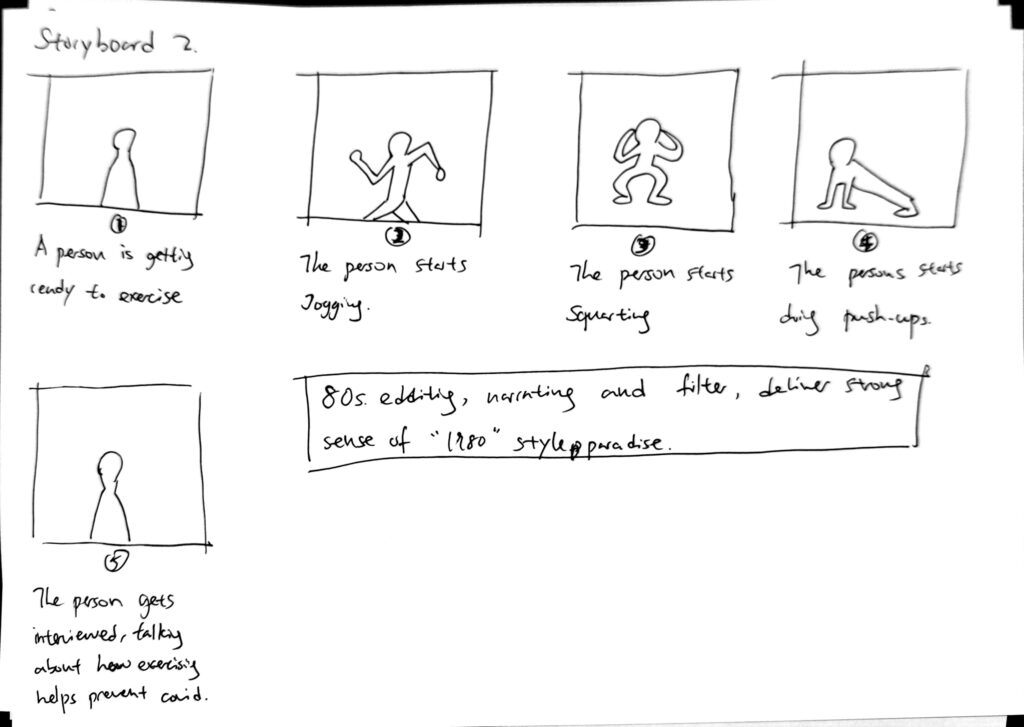
In storyboard 2, I put the interview section in the last frame because I want to use it as a conclusion to the entire video. However, it feels unbalanced because there will be not enough time for the interviewee to talk.
Here is the final version of the storyboard, which doesn’t have any voiceovers but purely acting:

Here is a list of elements that I will be implementing into my video:

In summary, I am going to ask my friend for help shooting the film. He is going to be in a suit because it is a very common outfit in the 80s ads. I also want him to cover his entire face with facemasks, which is a sarcastic thing to show in the film since it is about ‘how unharmful covid-19 is’.
The film will be set in a park because it is a place that people do exercise and are full of positive energies. To support the style, I will be using the 80s style filter, effects and music to recreate the vitange feeling of the advertisement.
Here are some pictures were taken during the video shooting:
We went to Hyde Park in London because I visited my friend there and stayed in his house for a few days:

We did the interview section first to warm up a little. As we can see, my friend is in a suit and covered with facemasks, just like how we planned.
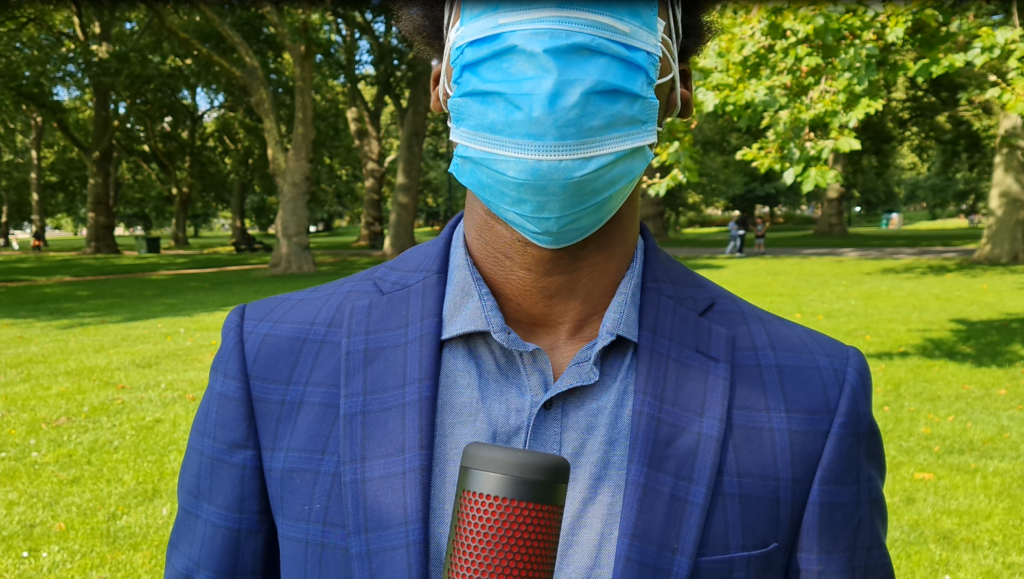
Here are some footages we did for the exercise sections:
I also filmed myself doing similar things, but it didn’t work as good as the ones we did on my friend:
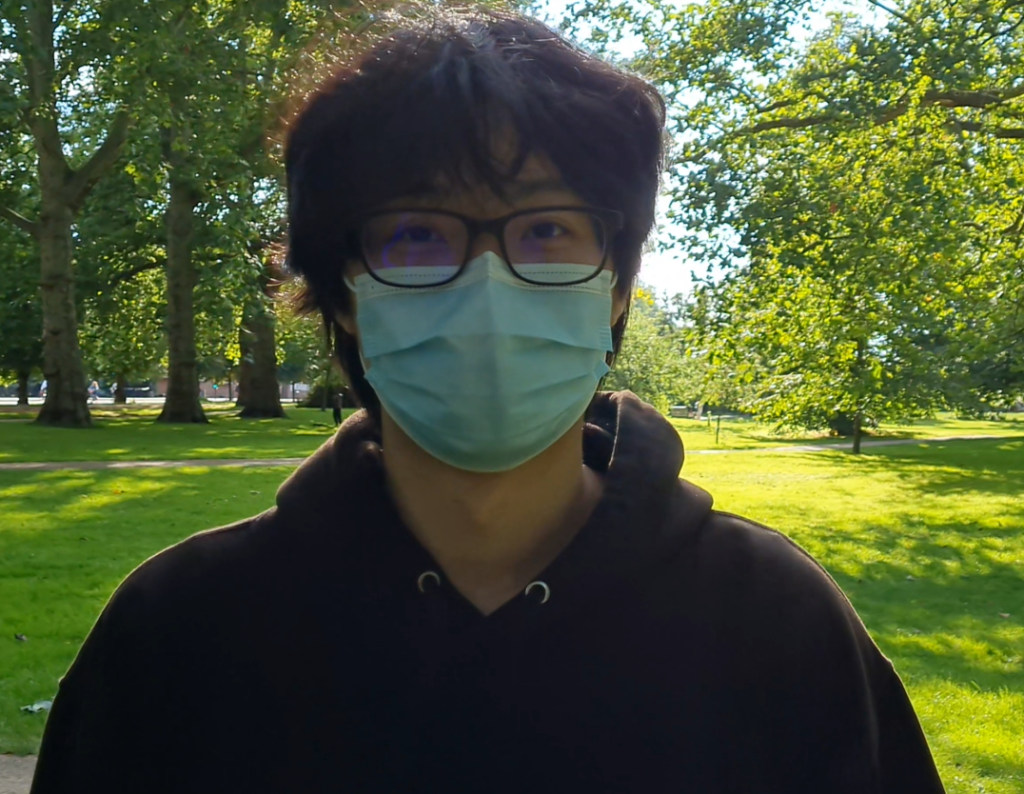
Once the video shooting was done, I then started to edit the film.
The first thing I looked at was the filter. Here is the theory about the 80s style filming:
This video explains what is the Super 8mm and how to make something like that in premiere pro:
I have also followed this tutorial here to create a vintage filter for my footage:
This is an experiment I did after adjusting the filter and the super 8mm overlay:
I have also added a royalty-free vintage font, made by HIRO, downloadable on: https://www.dafont.com/theme.php?cat=115

I stretched the text a little bit and adjusted the colours to red & yellow to make it looks more ‘old fashion’:

To match the 80s feeling, I downloaded royalty-free music from Epidemic Sound:

I also looked through a lot of 80s commercials to study the visual effects they used. Here are some interesting things I noticed: Firstly, they used a lot of fade in & out effects for footage transitions, and I think this might be caused by the film they used to record on. Secondly, they used many ‘frozen’ frames in the traditions. Thirdly, zoom in & out is also a significant feature in the 80s style ads. Finally, camera shakes can be applied to everything, including the footage and the subtitles.
OUTCOME.
This is the outcome:
